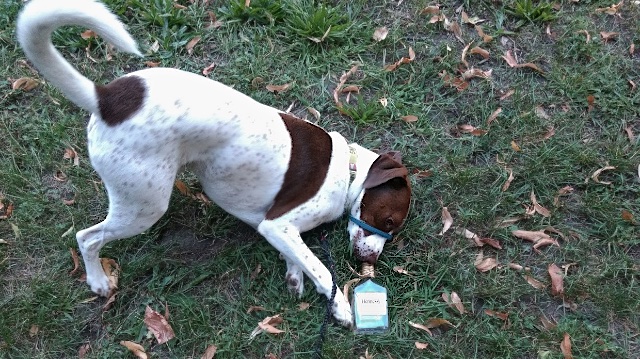
While some of these parts will be too large to eat roots or less attractive to dogs than acorns leaves bark it is still possible for them to transmit toxins to your dog. One of the biggest threats that mulch poses is the fact that the wood chips are not something that dogs are supposed to be eating.
Even the bark from nontoxic trees when ingested in large quantities can cause issues by creating intestinal blockages.
Can dogs eat wood bark. Tree bark is especially dangerous as it can splinter causing cuts to your dogs mouth and gums as well as obstructions to his digestive tract. Lack of mental stimulation is the cause of a number of undesirable and destructive behaviors. Chewing and eating tree bark can be a stimulating diversion.
Beside above why does my dog eat sticks and bark. If your dog is consistently eating wood or other debris this can definitely cause issues ranging from small to severe. Some common issues include tooth problems that may cause your pup to need a root canal or other digestive issues depending on what it is that they actually ingest.
Rest of the detail can be read herePeople also ask is it okay for my dog to eat sticks. Sticks and Wood The danger though is that the dog begins to use sticks as toys and many dogs will begin chewing on the stickWood splinters easily when chewed on and shards can jam into the dogs mouth causing an infection. Also if pieces of wood are swallowed it can cause intestinal blockage.
You just need to ensure that your dog isnt in an environment where there is wood everywhere. It is sometimes easier said than done because your environment may not allow you to keep your dog away from wood especially if you live near a wooded area. Even if it seems difficult in the beginning you should still do your job and clear as many logs sticks or pieces of wood that your dog has collected.
One of the biggest threats that mulch poses is the fact that the wood chips are not something that dogs are supposed to be eating. Depending on the size of the wood chip you can run into quite a few problems. Smaller wood chips have the threat of causing an intestinal blockage perforations and other similar problems.
Not to mention that a dogs stomach is not designed to. Needless to say the dogs were and always have been fine but I didnt use the bark again just in case. Having said that there are probably dog friendly varieties that havent been treated but I would guess at them being more expensive.
Some weeds willjust come through the back too as will grass so I wouldnt use it as a weed suppressant anyway. NS8RW Redwood Rubber Mulch is a safe mulch that can be used for dogs of all sizes and may have some additional benefits for dogs with allergies. By minimizing dust build-up and mold growth moss.
Pros You dont have to fret about termites or other wood parasites. Sticks and Wood Many dog owners utilize sticks as a fetching toy when outside on walks and at the park. The danger though is that the dog begins to use sticks as toys and many dogs will begin chewing on the stick.
Wood splinters easily when chewed on and shards can jam into the dogs mouth causing an infection. Also if pieces of wood are swallowed it can cause intestinal blockage. The fungus Aspergillus fumigatus thrives in damp bark and wood chip.
When ingested or inhaled this fungus can poison your dog and has the potential to cause serious liver damage. Some types of wood chip are treated with chemicals. The problem with your dog eating wood is two-fold.
Small pieces of wood can lodge splinters in the mouth and esophagus causing damage. Large pieces of wood can cause even more significant problems including perforated intestines or stomach lining and obstruction of your dogs bowels. Ultimately wild dogs eat wood bark to survive and this habit may be wired into the modern dogs genetic code.
Chewing on wood is a sign of boredom. To bored dogs only the sky is the limit and since bored dogs are quite creative in finding entertainment chewing on wood sounds like a great idea. Some wooden sticks or tree branches come from trees that may be poisonous to dogs.
Think of the chestnut oak apple buckeye and locust. Even the bark from nontoxic trees when ingested in large quantities can cause issues by creating intestinal blockages. Chewing trees can damage your dogs teeth and small splinters of wood can dislodge and become stuck in your dogs mouth and esophagus.
Pieces of treated lumber can contain toxic arsenic compounds which are poisonous to dogs and humans. Chewing the wood is certainly dangerous but your dog can become ill by eating food or drinking water from the surface according to Partnership for Animal Welfare. While some of these parts will be too large to eat roots or less attractive to dogs than acorns leaves bark it is still possible for them to transmit toxins to your dog.
For example oak leaves and acorn caps that fall into a dogs water bowl can taint the water as the gallotannins seep in over time.